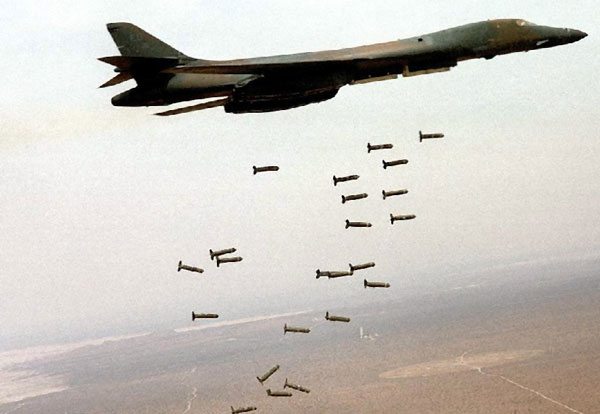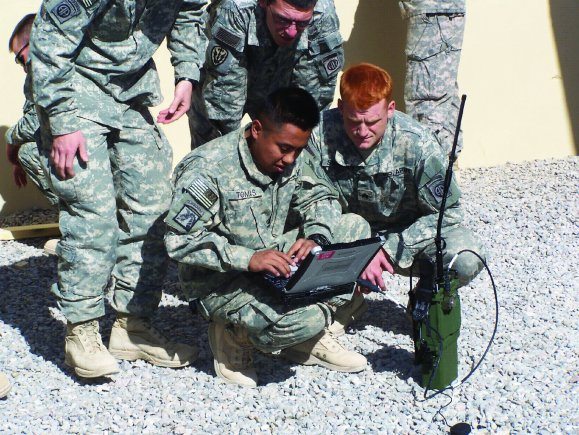The nation’s security strategy is built on nuclear deterrence, and the systems and workforce that support nuclear capabilities must be sustained, senior Defense Department officials told Congress Nov. 2.
James N. Miller, the principal deputy undersecretary of defense for policy, and Gen. C. Robert Kehler, the U.S. Strategic Command commander, discussed DOD perspectives on the nation’s nuclear posture before the House Armed Services Committee.
Miller acknowledged in prepared testimony that since the height of the Cold War, the U.S. nuclear arsenal has declined from about 31,000 warheads in 1967 to just over 5,100 in 2009, and has dropped slightly since.
He added that unclassified estimates suggest Russia has 4,000 to 6,500 nuclear weapons, 2,000 to 4,000 of which are tactical weapons. China is estimated to have a few hundred nuclear weapons, and India and Pakistan less than China, he added, while the United Kingdom and France each have a few hundred, North Korea has tested a plutonium-based weapon, and Iran is pursuing a nuclear capability.
“Although both Russia and the United States have substantially decreased nuclear weapons since the Cold War, even after (the new strategic arms reduction treaty) is fully implemented, together we will account for over 90 percent of the world’s nuclear weapons. As a result, our focus for the next stage of arms control is bilateral efforts with Russia,” Miller testified.
He noted the 2010 Nuclear Posture Review directed DOD to analyze deterrence requirements to set a goal for future nuclear reductions below New START requirements, which call for both the United States and Russia to reduce their stockpiles to 1,550 strategic warheads by February 2018.
Miller said defense experts are performing that analysis in line with nuclear posture review strategic guidelines. The goals, he added, are to:
— Prevent nuclear proliferation and nuclear terrorism;
— Reduce the role of U.S. nuclear weapons in national strategy;
— Maintain strategic deterrence and stability at reduced nuclear force levels;
— Reassure U.S. allies and partners; and
— Sustain a safe, secure and effective nuclear arsenal.
“Our analysis is also considering the critical question of what to do if deterrence fails,” he added. “In effect, we are asking, ‘What are the guiding concepts for employing nuclear weapons to deter adversaries of the United States, and what are the guiding concepts for ending a nuclear conflict on the best possible terms if one has started?'”
That analysis should be complete this year, Miller said, after which the department expects to receive new presidential guidance.
Miller noted that NATO also is conducting a nuclear posture review, which is expected to be complete in the spring, before the next NATO summit.
“As with all NATO documents, the (review) will be a consensus document,” Miller said. “We believe that it will include a discussion of the role and size of NATO nuclear forces, as well as a discussion of the possibility for future nuclear reductions.”
Miller said as the 2010 Nuclear Posture Review states, the United States will pursue further reductions in nuclear weapons with Russia. Those reductions, he said, may include strategic and tactical deployed and nondeployed nuclear weapons.
However, Miller added, the end result “will ensure that the United States maintains our ability to deter a nuclear attack, our operational flexibility and the ability to hedge against geopolitical and technical uncertainty.”
Maintaining strategic stability with both Russia and China will remain a key priority in the years ahead, Miller said, and U.S. officials will continue to promote more stable, resilient and transparent strategic relationships with those countries.
“The United States took the first step by declaring the number of nuclear weapons in the U.S. stockpile, and we would welcome reciprocal declarations by Russia and China,” he added.
While department officials recognize fiscal austerity will constrain spending on national security programs in the years ahead, Miller said, significant reductions to funding for the nuclear enterprise would place strategic and extended deterrence commitments at risk — a posture he said the United States cannot afford.
The nuclear enterprise remains, for the foreseeable future, the foundation of the U.S. deterrence strategy and defense posture, he noted.
“The U.S. nuclear weapons infrastructure requires significant and immediate investment,” Miller said. “To remain safe, secure, and effective, the U.S. nuclear stockpile must be supported by a modern physical infrastructure and staffed by the most promising scientists and engineers of the next generation. I understand the budget pressures, but the nuclear enterprise is an area where there is a need to invest now to save money later.”
Kehler, also in prepared testimony, noted Stratcom maintains around-the-clock operation of the nation’s nuclear deterrent triad: ballistic missile submarines, intercontinental ballistic missiles and nuclear-capable heavy bombers.
“The purpose of the nuclear deterrent force remains clear: to deter attacks on the U.S. and our allies and, if deterrence fails, to respond according to presidential direction,” the general noted.
Stratcom has a role in other defense capabilities that contribute to the nation’s deterrence options, he added: ballistic missile defenses, advanced conventional precision-strike capabilities, space defense and cyber defense, countering weapons of mass destruction, and maintaining and developing intelligence capabilities necessary for a dynamic operating environment.
Still, he said, Stratcom’s top priority remains ensuring the nation has “a safe, secure, and effective nuclear deterrent force and to operate that force to deter attack on the U.S. and our allies.”
Continued funding support is essential to the long-term safety, security, and effectiveness of the nation’s nuclear deterrent force, the general said.
Specifically, he added, funding is vital for triad sustainment and modernization. He cited the need for a replacement for the Ohio-class submarine fleet and requirements scoping for both the next-generation bomber and follow-on ICBMs. In addition, the general said, funding is critical for weapon life extensions and infrastructure recapitalization — including a uranium processing facility and chemistry and metallurgy research replacement facility — as well as for reactor design activities for submarine replacement and command-and-control facilities.
“It is critically important to proceed with the planned investments in force sustainment, force modernization, warhead life extension, the Stockpile Management Program and the Department of Energy’s nuclear enterprise,” Kehler said.











